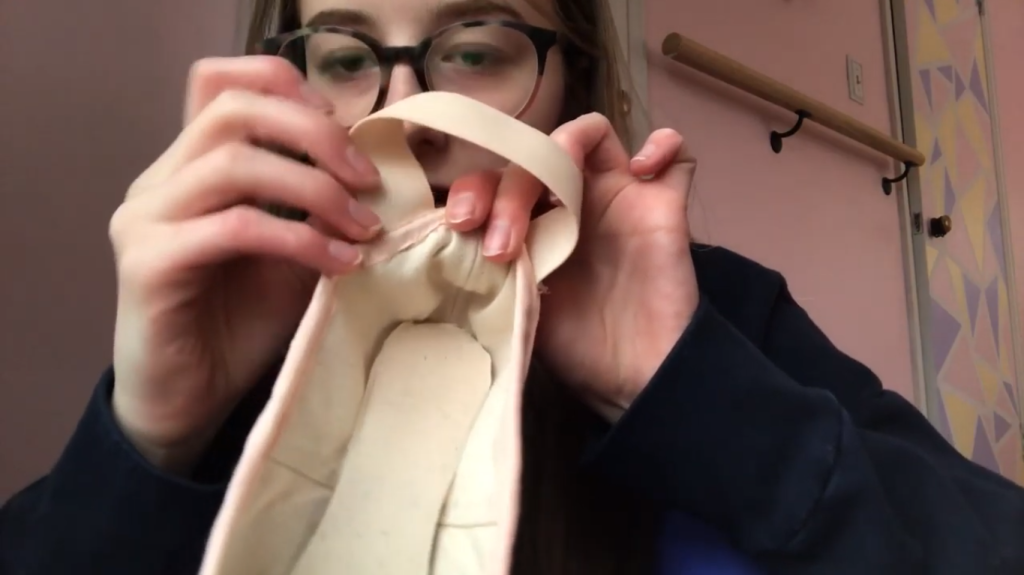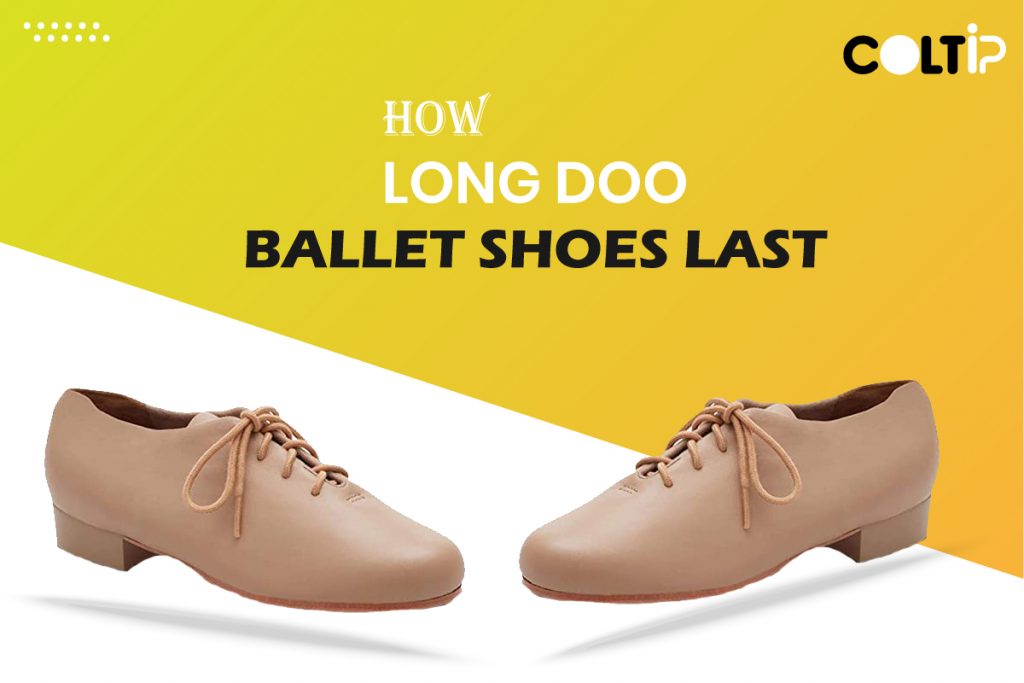Table of Contents
Introduction:
Ballet shoes, with their delicate elegance, are a crucial tool for every dancer. However, the question that often arises is, How long do ballet shoes last? In this complete guide, we will explore the factors influencing the longevity of ballet shoes, from different types to care practices and when to replace them.
How Long do Ballet Shoes Last?
The lifespan of ballet shoes varies based on factors like usage, dance style, and care. Generally, pointe shoes last about 3 months, while regular ballet shoes can endure 6 months to a year. The durability is influenced by the dancer’s experience level, frequency of use, and the specific demands of different dance techniques. Proper care, such as using the right bags and powders and addressing damages promptly, can extend their lifespan. Signs for replacement include a compromised fit, detached soles, feeling the floor excessively, visible holes, or a loss of foot support.

Different Types of Dance or Ballet Shoes and Lifespan of Varies Ballet Shoes
The longevity of ballet shoes varies based on factors like the dancer’s experience level, the type of dance, and the quality of care. To give you a general idea, let’s break down the expected lifespan for different types of ballet shoes:
Pointe Shoes: How Long do Pointe Shoes Last?
- Expected Lifespan: About 3 months.
- Factors Influencing Longevity: Varies for beginners and professionals; materials used.
Pointe shoes, essential for advanced ballet techniques, have a relatively short lifespan due to their intricate design and materials. Beginners might find their shoes lasting longer compared to professional dancers.
Ballet Shoes:
- Expected Lifespan: 6 months – 1 year.
- Factors Influencing Longevity: Dance experience, materials, care practices.
Ballet shoes, being a staple for various dance styles, tend to last longer. However, factors like the dancer’s experience level and care practices come into play.
Jazz Shoes, Lyrical Shoes, Tap Shoes, Ballroom Shoes:
- Expected Lifespan: 6 months – 1 year (Varies).
- Factors Influencing Longevity: Material quality, dance intensity.
These shoes, used for different dance genres, generally fall within a similar lifespan range. Quality materials and proper care contribute significantly.
Ballet Shoes Dance Experience:
Dance experience plays a crucial role in the lifespan of ballet shoes. Beginners in the early stages of learning may find their shoes lasting longer. As dancers progress to advanced techniques, the wear and tear on the shoes increase, shortening their lifespan. For instance, pointe shoes worn by professionals may only last a week due to intense use.
Ballet Dance Shoes Style and Material:
Different dance shoes are crafted with specific materials to support the dancer’s feet. Understanding the materials and their durability is essential for prolonging the life of ballet shoes. For example:
- Ballet shoes can be made of canvas or leather, each with its advantages.
- Pointe shoes, crafted meticulously, have a specific lifespan due to their construction.
Proper Dance Ballet Shoe Care:
Caring for your ballet shoes is as important as choosing the right pair. Proper maintenance can significantly extend their lifespan. Consider the following care tips:
- Pointe Shoe Bags: Use bags designed for pointe shoes to protect them during transport.
- Mesh Dance Shoe Bag: Allow your shoes to air out to prevent softening.
- Pointe Shoe Powder: Maintain dryness and shape with specialized powder.
- Jet Glue: Address minor damages promptly with this adhesive.
- Drying Pouch: Ensure thorough drying between uses.
How Long do Ballet Slippers Last?
Ballet slippers typically last around six months to a year for most dancers, with professionals often needing replacements every three to six months due to more intensive usage. Proper care, cleanliness, and allowing the slippers to air out after use can help extend their lifespan. Individual experiences may vary based on factors like dancing frequency and intensity.
To clean ballet shoes effectively, it’s crucial to consider the material of the shoes. Each type requires specific care to maintain its appearance and durability. Below, we outline the cleaning processes for satin, canvas, and leather ballet shoes and the unique considerations for pointe shoes.
When to Replace Your Dance Shoes
Recognizing the signs that your ballet shoes need replacement is crucial for your safety and performance. Consider the following indicators
- The fit becomes too loose or tight.
- The sole is detaching.
- You start feeling the floor excessively.
- The shape of the arch is compromised.
- Visible holes appear.
- Loss of foot support.

Few Tips on Choosing New Ballet Shoes
It is important to consider both fit and function when choosing new ballet shoes.
- First, the shoes should be the correct size. They should be snug but not too tight, allowing you to move freely.
- Second, the shoes should be appropriate for the type of dancing you will be doing. If you are a beginner, you may want to start with soft shoes. If you are more experienced, you may want to try pointe shoes.
- Finally, it is important to choose a comfortable shoe that you can move quickly.
How to Clean Ballet Shoes?
To clean ballet shoes, start by brushing off any excess dirt or dust using a soft brush. For stains, dampen a cloth slightly and gently wipe the affected areas. Avoid using harsh chemicals or tossing them in the washing machine, as this can damage the delicate material. Allow the shoes to air dry naturally, and avoid exposing them to direct heat sources. This simple care routine helps maintain the appearance and longevity of your ballet shoes.
How to Clean Canvas Ballet Shoes?
Canvas ballet shoes, suitable for everyday use, are more durable and can withstand machine washing. Here’s how to clean them:
- Machine Washing: Run canvas shoes on a delicate, cold-water cycle. Use a laundry bag or pillowcase for protection during the cycle.
- Reshaping: After washing, reshape the shoes by hand.
- Air Drying: Let the shoe air dry after washing. However, avoid excessive washing to maintain the material’s longevity.
How to Clean Leather Ballet Shoes?
Leather ballet shoes, known for durability, require spot cleaning to avoid damaging the material. Follow these steps:
- Spot Cleaning: Use a damp cloth for spot cleaning. For stubborn stains, a mixture of mild detergent and water can be used.
- Gentle Rubbing: Gently rub the damp cloth on marks or stains.
- Minimal Water: Use as little liquid as possible, as water can affect leather and lead to quicker material breakdown.
How to Clean Pointe Shoes?
Pointe shoes, often made of satin, require careful cleaning due to their delicate nature. Excessive water can be detrimental. Follow these steps:
- Surface Cleaning: Follow the standard recommendations for satin ballet shoes for surface cleaning.
- Limited Cleaning: Pointe shoes are designed for a limited lifespan, so avoid excessive cleaning to prevent breakdown. Water, especially in the toe box, can damage the shoes.
Top Tips for Ballet Shoes Long-Lasting.
1: Clean your shoes
It is very important to clean your shoes every time you wear them. This will help remove sweat and dirt, breaking down the material over time. When you’re not wearing your ballet shoes, make sure to store them in a cool, dry place. This will help to prevent the leather from drying out and cracking. Ballet shoes are a significant investment, so it’s important to take care of them. Be sure to clean and store them properly and inspect them regularly for any signs of wear and tear.

2: Inspect them regularly
It would help to always inspect your shoes for any signs of wear and tear, such as holes or loose stitching. If you notice any damage, be sure to have the shoes repaired as soon as possible. It’s important not to wear your ballet shoes too often as this can shorten their lifespan. If possible, only wear them for rehearsals and performances.
3: Break them in gradually
When you first get your ballet shoes, it’s essential to break them in gradually. Wear them around the house for a few hours each day until they feel comfortable.
4: Don’t expose them to sunlight
Sunlight can damage the material of your ballet shoes, so it’s best to avoid exposing them to direct sunlight. When putting on your ballet shoes, be careful not to rip or tear the fabric.
5: Don’t wear them with socks
It’s important not to wear socks with your ballet shoes as this can cause the shoes to stretch out and become loose. Ballet shoes are designed for dance floors, so avoid wearing them on hard surfaces such as concrete or asphalt.
6: Choose the right size
It’s important to choose a ballet shoe that fits well. The shoe should be snug but not too tight, and you should be able to move your toes freely. When choosing a ballet shoe, you should also consider the style of the shoe. There are many different styles available, so select one appropriate for the type of dancing you will be doing. It’s always best to try on ballet shoes before you buy them. This way, you can make sure they fit well and feel comfortable.
7: Don’t share your ballet shoes
It’s important not to share your ballet shoes with others as this can increase the risk of injury. Ballet shoes are designed for indoor use only. Avoid wearing them outside as this can damage the shoes and make them uncomfortable to wear.
8: Don’t overstretch them
When putting on your ballet shoes, be careful not to overstretch the fabric. This can damage the shoes and make them uncomfortable to wear. Ballet shoes are designed for dance floors, so avoid wearing them on rough surfaces such as concrete or asphalt. It’s important to choose a ballet shoe that fits well. The shoe should be snug but not too tight, and you should be able to move your toes freely.
How Tight Should Ballet Shoes Be?
Ballet shoes should be snug but not too tight. They should feel like a second skin, with no excess material around the toe or heel. Ensure you can stand flat on the ground and straighten your big toe while wearing them. If they’re too tight, go up half a size; if they are too loose, go down half a size for the right fit.
Conclusion:
In conclusion, understanding how long ballet shoes last involves considering various factors, from dance type to experience level and care practices. By adhering to proper care routines and recognizing when your shoes need replacement, you can ensure a safer and more enjoyable dance experience. Remember, each type of dance shoe is unique, and its longevity is influenced by how well it aligns with your dancing journey. Choose wisely, care diligently, and dance with confidence!
Can Ballet Shoes Be Washed?
Washing ballet shoes in a machine is not recommended. Instead, clean them by brushing off dirt, wiping stains with a damp cloth, and air-drying. Avoid using a washing machine as it can damage the delicate materials.
How Long Does a Pair of Pointe Shoes Last?
The lifespan of pointe shoes varies based on factors like usage, dancer’s level, and foot growth. For beginners, it could be around 6 months to a year, while professionals might need new pairs after just one week, depending on their dance intensity.
How Should Ballet Flats Fit?
Ballet flats should fit snugly, providing support without being too tight. They should feel comfortable, like socks, with no excess material around toes or heels. If they’re too tight, go up a half size; if too loose, go down.
Should Ballet Shoes be Tight?
Ballet shoes should be snug but not excessively tight. They should allow you to stand with flat feet on the ground and straighten your big toe. If they’re too tight, consider going up half a size.
How Often do Ballerinas Change Their Shoes?
The frequency of changing ballet shoes depends on factors like usage, dance intensity, and personal preference. Professional dancers may change them more frequently, sometimes even after a single performance.
How Long do Pointe Shoes Last for Beginners?
Beginners’ pointe shoes can last around 4 months to a year, as they typically spend less time en pointe. Factors like growth and practice frequency also influence their lifespan.
How Long do Ballet Flats Last?
The lifespan of ballet flats varies based on factors like usage and care. On average, they may last between 6 months to a year, depending on the dancer’s activity level.


